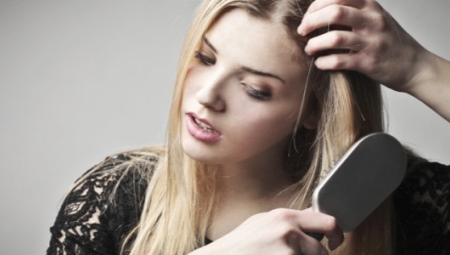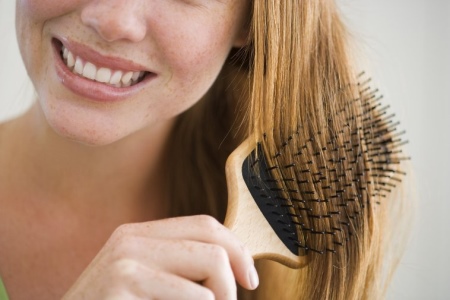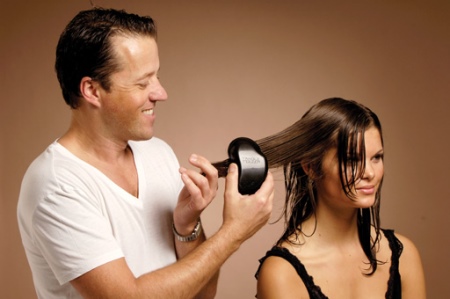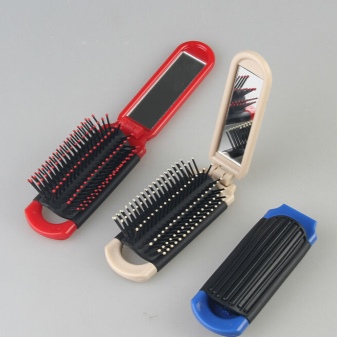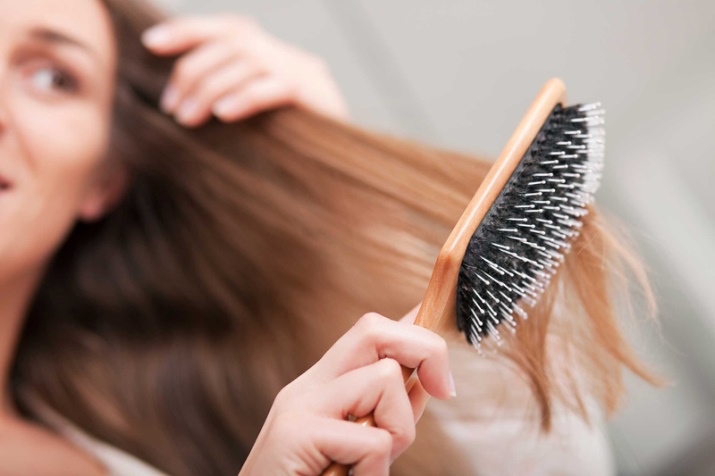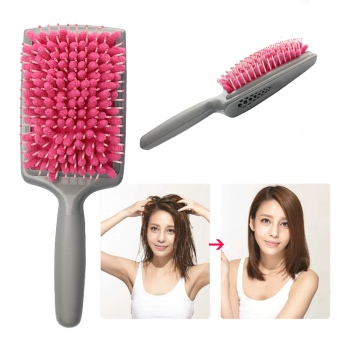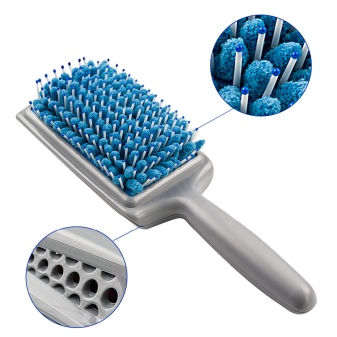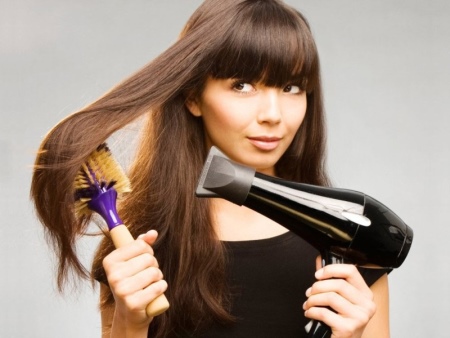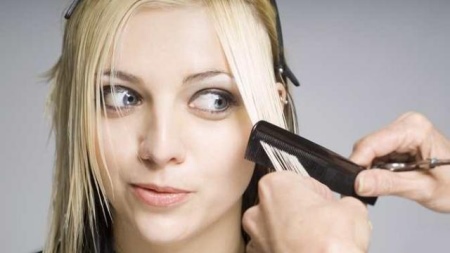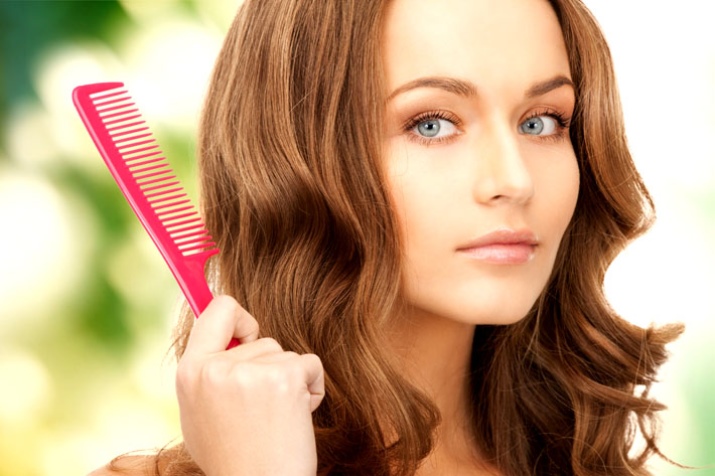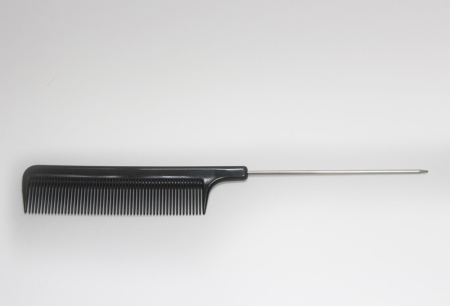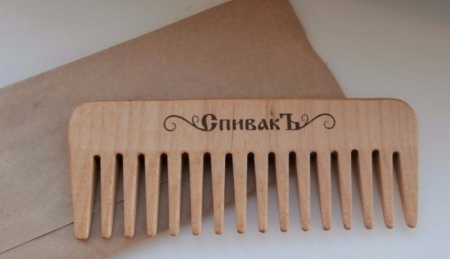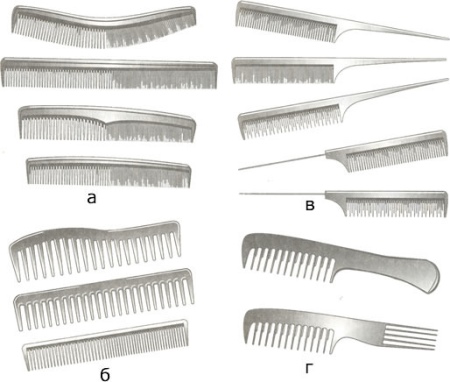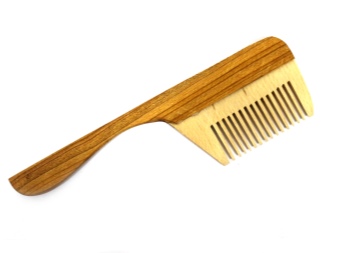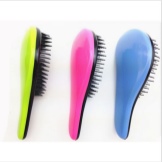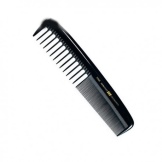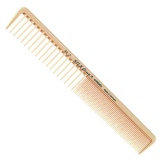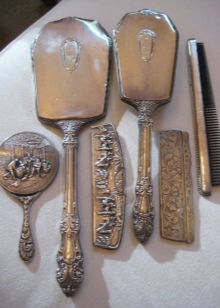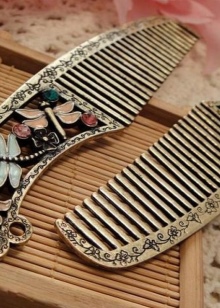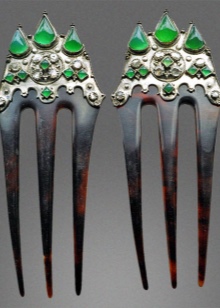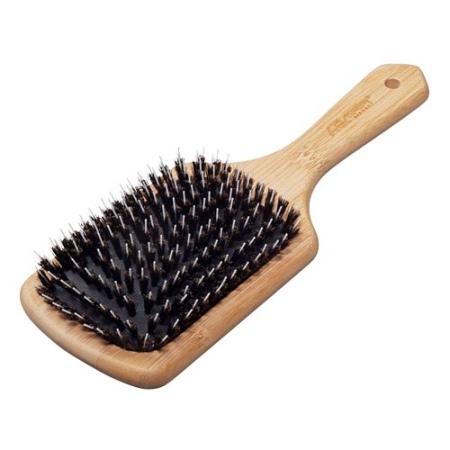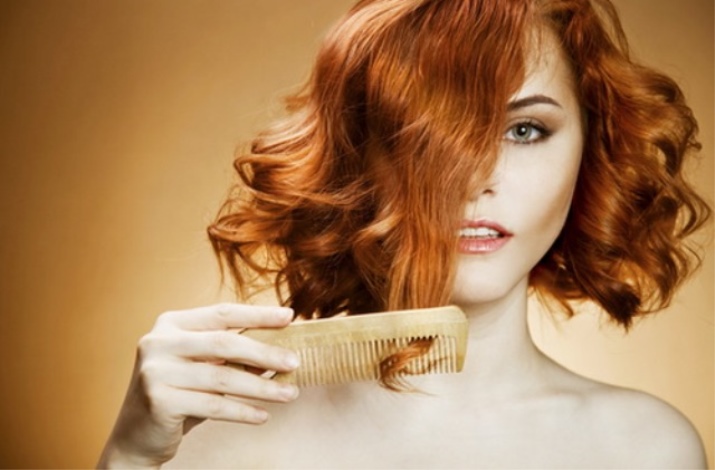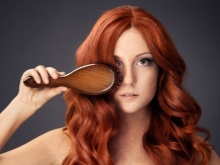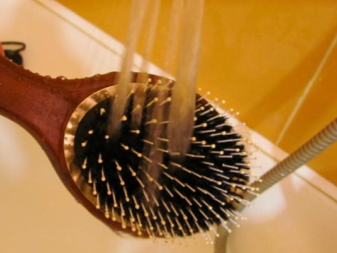The life of a modern person is impossible without a comb, which accompanies him in daily activities, travel, business trips, trips to events. This simple-looking object helps your hair look well-groomed and create hairstyles resembling works of art.
Types and application
Despite the large number of combs in the display cases, they can be divided into four categories according to shape and size, as well as purpose:
- The traditional and most popular comb-brush is called "bombazh" or, as more common, "massage". Its shape may be different, but most often it is a rectangular or oval base under the teeth on a soft pillow and a long handle. This type is universal, as it is suitable for any structure, thickness and length of hair. The brush is intended not only for combing and disentangling, but also for massage of the head, which has a positive effect on blood circulation and distribution of sebum over the entire length.
Due to the peculiarities of the impact, hair gets shine.
- Mini massage comb - a popular Tangle teezer, which has no handle. Due to the small size and the ability to close the teeth, such a thing becomes comfortable to carry in the bag. Also included are combed hairs for hair extensions. They are distinguished by the presence of eyelets, which allow the cloves to not cling to the capsules and easily slide along the strands.
- Practical and convenient storage even in small bags are discharge combs. They are transformed from a small folded design into a complete product or a brush with a mirror.
- Flat brushes are intended mainly for combing curls and smoothing them, but not creating styling. They do well with disentangling without harming the hair.
- The recent novelty of the world of beauty - a comb for drying with microfiber. She not only massages her head with her teeth, but also pulls out moisture using a tissue part. For further drying combs on it there are special holes.
- Popular skeletal, blown or tunnel comb. Her teeth are wide apart, and the presence of slots in the base makes it possible to create hot air circulation when styling with a hair dryer. With the help of such a comb, you can easily lay short or medium length hair, while giving them a volume at the roots.
- Another type of comb is round brushing. Thanks to the materials from which they are made, the whole brush is well warmed, which allows you to do the laying with the volume at the roots, straight curls. Since this model creates twisted tips, it is often referred to as a hairbrush comb. Brashing, along with tunnel combs, are popular professional hairstyles.
- The eternal subspecies of combs are combs that have been used for many centuries. Best of all, they are suitable for short hair and are indispensable for haircuts, since their simplest design allows you to tightly lock the curls.
Combs on long handles help to easily separate the strands from each other and create a parting.
In this comb possible different frequency of teeth. The closer they are to each other are located, the more convenient the comb to create a pile. Another advantage of this model is that it allows you to comb out loose strands when creating tails.
- Comb-tail is a comb with a long thin handle.It is suitable for removing irregularities, dividing into thin strands, weaving, laying.
There are combs that include the characteristics of several types. For example, a massage comb is common for creating bouffants. This comb has a thin design and soft natural bristles. Another combined model is a comb, which has frequent teeth on one half and rare teeth on the other.
Combined models also include thinning combs. They are a simplified professional razor for thinning the volume of hair.
Material classification
There are a large number of materials that make comb. So, there are plastic, wooden, rubber, ebonite, metal and ceramic.
Each of them has its own specific characteristics, advantages, and sometimes disadvantages:
- Metal combs, for example, aluminum, do not recommend the use of non-professionals, as if mistreated, they can harm the scalp with its rigidity. This material quickly heats up when exposed to a hair dryer, which makes it uncomfortable to use and can damage the hair. Metal is most often used in separate parts, for example, in the form of tails, as it separates the strands well.
- Wooden combs are made of ash, cherry, beech, oak, pine, peach, and bamboo, sandalwood, juniper, and birch are especially popular. Besides the fact that it is a natural tasty smelling material, wood is not electrified. Over time, cracks appear cracks, especially if they have a loose texture, like a pine. Such a defect harms the hair structure and can tear them out.
To extend the service, the comb should not be wetted and kept at the heaters.
- Plastic combs are the most popular and common. They are inexpensive, wear-resistant and resistant to temperature shocks. Plastic copes well with the main function - combing, but sometimes it strongly electrifies the hair.
- Distributed rubber, rubber and silicone combs. They are used for combing wet hair, do not injure them and the scalp, and do not electrify. Carbon and ceramic products easily glide along the hair, separate the strands and are not exposed to chemicals, so they are most often used by professionals in salons.
- In addition to the usual materials, there are often more rare, elegant and expensive. You can find ebonite combs, bronze, gold, silver with inlays of amethyst and other precious stones. Crests of horns and bones, which were used during the times of the Egyptian pharaohs, possess external beauty and pleasant smoothness.
Combs with natural bristles from horse, pork, boar, combined wool are in great demand. These materials do not damage the hair, but they strongly electrify, so they are advised to slightly moisten or treat with antistatic.
The most practical combs are carbon fiber with a ceramic coating, as they do not require special care and are not contaminated. The most useful are wooden, and traumatic - metal. However, if the teeth have small balls at the tips, then regardless of the base material, such a product will be the most benign.
How to choose?
Combs should be divided not only according to the purpose, shape, size and type of bristles, but also according to the type of hair for which each of them is intended. Properly selected product will help you easily and without injury to cope with even the most stubborn shock. And, conversely, an inappropriate comb will not only be ineffective, but may also damage the structure of the hair.
The most versatile is a wide massage comb, as it is suitable for hair of any thickness, length and structure.
For thin and brittle, as well as dry hair, prone to be confused, it is recommended to use a comb with natural bristles. However, they are not suitable for curly, because not only will not comb, but confuse curls. Natural bristles are suitable for disentangling medium-length hair.
To give volume to short hair, one should use skeletal combs and bracing, and for ordinary combing - flat scallops and brushes. When choosing a brushing it should be remembered that the longer the hair, the larger the diameter needed.
For fine hair, a high density of bristles is necessary, and for thick, on the contrary, rare.
Curly hair looks spectacular, like real waves, but at the same time they are very naughty and brittle. For curly, tight curls, flat combs and brushes with teeth spaced far apart, such as the Tangle teezer, are best suited. For soft and fluffy suitable massage comb.
Also crests with rare teeth cope with thick, rigid in structure hair. Models with frequent teeth - with soft and thin. In general, they are good for a long hair, as well as a massage comb. For thick hair, you should look at the combined models with different frequency of teeth, combs, flat rigid bombs.
To a certain type of hair is recommended to choose their materials. For example, silicone and ebonite with antistatic effect are suitable for curly hair. Also, silicone and carbon will give softness, shine and silkiness. Natural bristles, nylon are recommended for weakened, brittle hair. Plastic is suitable for very short hairstyles, hedgehogs, and high-quality wood for untangling.
Material needs to be tougher than thicker hair. By the most solid are bone, porcelain, metal, and soft - rubber, plastic, silicone.
Natural materials are recommended more often than artificial ones, however, when choosing such a comb, you should take into account the peculiarities of your body. An allergic reaction may occur on natural bristles, silver and other metals.
When it comes to styling, these or other combs are more suitable for different purposes. Round combs made of nylon will help straighten wavy and curly hair, and just to align the straight fit the product with natural bristles. Lush curls can be created using large volume brashing, and small diameter will help in giving the basal volume.
Combs with tails and combs with long sparse teeth will help to separate the strands. And in order to evenly apply gel or mousse on them, it is best to use a plastic flat comb.
The following video will tell you how to choose the right hair comb:
Important nuances
It is important not only to choose a suitable comb, but also to use it properly:
- Long-term combing is recommended, which has a positive effect on the health of the hair and scalp. It should be easy to process about ten minutes a day, morning and evening. In doing so, it is often not recommended to do this, as this will lead to rapid contamination. If the hair has a tendency to be greasy, then combing should be carefully, without touching the scalp, so that the sebaceous glands do not start their work.
- Experts do not recommend combing raw hair, so as not to damage their structure. Recently, however, there are more and more products intended just for drying. For example, a comb with microfiber. You can not comb the hair, which are processed by means of strong fixation: gels, mousses and varnish. First, you need to wash and dry them, and after that expose them to the effects of combs.
- Owners of short hair to the shoulder are usually not threatened with tangling of curls, so they can comb their hair from the roots to the ends. In order for the mats not to form, it is enough to trim the regrown hair in time. The main thing is not to damage the scalp with hard combs.
- Long and curly hair tends to be confused. Combing should begin from the tips to the roots, do not pull or tear the nodules, but carefully untangle the fingers and the comb.When tangled areas are left, you can use a brush. After movement the comb is recommended to hold the hair with your hand, so sebum is evenly distributed.
- It is important to care for the comb, so that it lasts longer and, most importantly, brings the desired effect on the hair. Sometimes people think that sometimes it is enough to clean the brush from the hair, but this is not so. To begin with, they must be removed after each combing, for example, with a needle, toothpick or special brushes.
- Since the comb has to deal with hair, scalp and its keratinous particles, sebum, you should follow the rules of hygiene. Hair also encounters dust and dirt every day, and all this remains in the bristles, creating a favorable environment for germs. It is best to use only your own thing, not to lend it to others and not to take someone else's.
- Do not forget about washing your hair brush at least once a week. Moreover, if the hair is oily, it should be washed daily. If the product has natural bristles, the procedure should be carried out with shampoo.
- If damaged, the comb is better to change immediately, as it can damage the hair or scalp. In general, it is recommended to change combs once a year.
